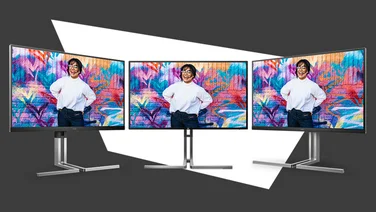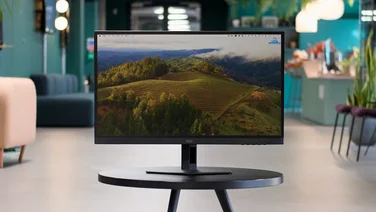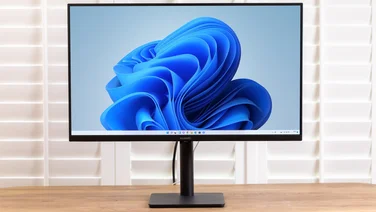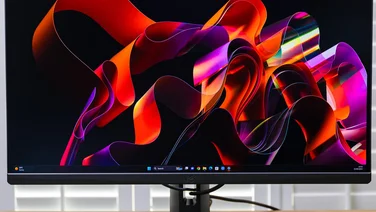To help us provide you with free impartial advice, we may earn a commission if you buy through links on our site. Learn more






The PB278Q is a 27in IPS monitor with a large 2,560×1,440 resolution, and is very similar in specification to Viewsonic’s VP2770-LED. It’s another highly adjustable screen with excellent picture quality, and is ideal for working on multiple documents or with complicated applications such as video editors or audio production applications.

Once we’d spent some time with a 2,560×1,440 monitor, it was hard to go back to plain old 1,920×1,080 – there’s so much space to arrange your windows that you don’t even particularly need a second screen. The PB278Q makes it easy to get comfortable with your monitor, thanks to height and tilt adjustment, but it doesn’t have so much height adjustment as the Viewsonic screen and doesn’t pivot from side to side, so you have to rotate the whole monitor on its stand instead. The monitor rotates into portrait mode for easier word processing.
The monitor’s understated dark grey bezel looks smart and it feels like a good-quality bit of kit, as you’d expect at this price. On the bottom are DVI, VGA, HDMI and DisplayPort inputs, and the monitor has 3W stereo speakers for basic sounds and YouTube videos. There’s no USB hub as on Viewsonic’s screen, unfortunately; we find USB hubs in monitors invaluable if you keep your PC out of the way on the floor.

We were impressed with the monitor’s image quality right out of the box. Our Dispcalgui calibration software and Spyder4Express colorimeter reported the screen as displaying 98.4% of the sRGB colour gamut at its default settings, and once we’d calibrated the monitor it was within 99.1% of sRGB. Even if you don’t calibrate the screen, you can be confident that you’ll be getting good colour accuracy; by contrast, we feel you need to use a calibrator on Viewsonic’s screen to get the most out of it.


The figures were borne out in our subjective image tests, where we could find little, if anything to complain about. In our solid colour tests colours were saturated and even across the monitor’s surface and blacks were deep with no leakage from the backlight. In our image tests we saw plenty of detail in both light and dark areas, showing off the monitor’s impressive contrast.
Asus’s PB278Q has superb colour accuracy even at its default settings, so, while we’d still recommend using a calibrator to get the most out of a monitor this expensive, you can still be sure of getting a decent picture even without any specialist equipment. It doesn’t have as much physical adjustment as the Viewsonic VP2770-LED and there’s no built-in USB hub, but is a useful £50 cheaper. If you want pivot adjustment, a USB3 hub and a very high stand, then Viewsonic’s screen is the one to go for, but if you can do without the fancy extras Asus’s screen is the one to buy.







